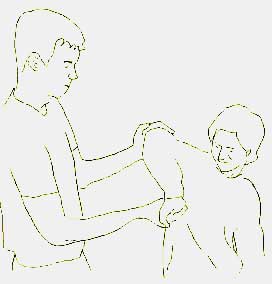Surrender?
/ The Taijiquan Classics say: "The most important thing in a fight is that you win!"
The Taijiquan Classics say: "The most important thing in a fight is that you win!"Not.
What I think is most often missed about the Taijiquan classics, because it isn't explicitly stated, is that they present Taijiquan as a conduct practice.
The literary roots of these classics are pretty clearly Daoist and Confucian. The style, language and even a few quotes make this clear. The Taiji classics are syncretic, meaning they draw on several sources yet give a feeling of cohesive wholeness.
Both Daoism and Confucianism conceive human beings, or perhaps I should say humanness, in terms of commitments. It is easy to argue that a person who starts eating human flesh has lost their humanity, but what makes Daoism and Confucianism distinct from "Western culture" is the notion that humanness is a continuum.
In other words, they pose the question, "Just how human are we?" Confucians answer the question by saying there is a protocol one can follow which is based in, and renewed by, an examination of our natural relationships with other people. How well we interact with the people close to us will influence how well each of them interacts with the people they know-- thus creating interlocking chains of good conduct leading all the way from the Emperor to every person in the nation.
Daoists agreed with this assessment, but they said that if a mechanism exists by which we are all connected, than it works on the cosmic level too. Thus our conduct must be connected to animals, stars and earthquakes. Popular Chinese religion often took this idea in to the realm of "wacky." Cults regularly sprung up saying things like, "If we regularly use too much energy getting across town, we will cause the icebergs to melt, the seas to rise and soil to become parched." Oh wait, that was Al Gore--anyway, you get the idea.
Confucians and Daoists both summerized their teachings with lists of precepts. I should add that Daoist precepts often concerned the inner workings of the body itself. While it is often posited that bad digestion must somehow be connected to earthquakes, the connection is not known, and keeping in mind that the connection itself is unknown--is a Daoist precept.
Oh yeah, I was supposed to be talking about Taijiquan. Well, if you take almost any saying from the Taijiquan Classics like for instance, "One's form should have no hollows and no projections" it is easy to see that this is a suggestion about how to perfect the efficiency of one's movement. Confucians think that efficient movement rectifies the heart/mind, and thus leads to clarity in one's actions-- which makes it easier to align what one intends with what one does!
If your intention is to resolve a dispute quickly and efficiently, it is entirely possible that the easiest resolution is to just drop your guard and take the hit.

 Here is a concept from Chinese Medicine which has a lot of currency for internal martial artists.
Here is a concept from Chinese Medicine which has a lot of currency for internal martial artists.
 Sun Tzu,
Sun Tzu,  I stay far away from politics in my blog. But yesterday's Wall Street Journal article about a self taught Tribal Warfare Expert named Iraq Mac is just too good to not submit to my readers too.
I stay far away from politics in my blog. But yesterday's Wall Street Journal article about a self taught Tribal Warfare Expert named Iraq Mac is just too good to not submit to my readers too.
 I think this picture helps explain why people developed rooting techniques. From the time of Alexander the Great until Julius Caesar this type of warfare was totally dominant.
I think this picture helps explain why people developed rooting techniques. From the time of Alexander the Great until Julius Caesar this type of warfare was totally dominant. with something called a Centurion. A Centurion was 100 men divided into 20 groups of 5 which were capable of acting as a unit.
with something called a Centurion. A Centurion was 100 men divided into 20 groups of 5 which were capable of acting as a unit. This is a continuation of the series on jin, that started below with a discussion of pulsing.
This is a continuation of the series on jin, that started below with a discussion of pulsing. Twisting unevenly will cause lots of damage. That's how joint locks and breaks work. Practice on a chicken if you want. For instance, to bust the wrist, just twist it while immobilizing the elbow.
Twisting unevenly will cause lots of damage. That's how joint locks and breaks work. Practice on a chicken if you want. For instance, to bust the wrist, just twist it while immobilizing the elbow.